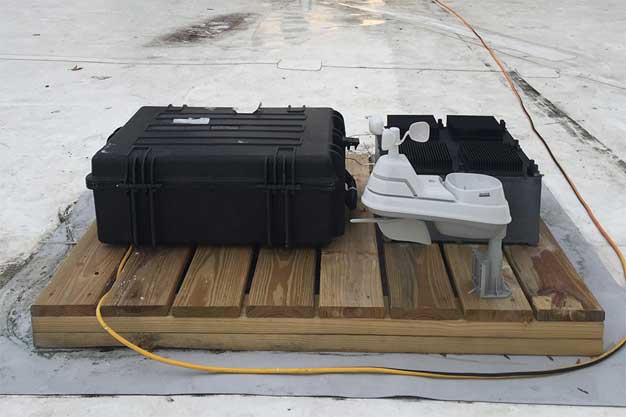MIT Researchers Develop Infinite Power Tech That Works On Temperature Fluctuations
Researchers from the Massachusetts Institute of Technology (MIT) have announced a new power generating device that is able to use temperature fluctuations to create electricity. The technology is based on principals of thermoelectric devices able to generate power when one side of the device is a different temperature than the other. The device the MIT team has created doesn't require two different temperature inputs at the same time, rather this device harnesses changes in ambient temperature to create electric power as a virtually perpetual renewable energy source.

The new system is called a thermal resonator and has the potential for continuous, years-long operation to power remote sensing systems without needing any external power or batteries. The MIT team outlined their findings in a report published in Nature Communications authored by graduate student Anton Cottrill, Carbon P. Dubbs Professor of Chemical Engineering, Michael Strano, and seven others in MIT’s Department of Chemical Engineering.

"We basically invented this concept out of whole cloth," Strano says. "We've built the first thermal resonator. It's something that can sit on a desk and generate energy out of what seems like nothing. We are surrounded by temperature fluctuations of all different frequencies all of the time. These are an untapped source of energy."

The researchers note that the level of power generated by the system right now is modest, but the big advantage of a thermal resonator is that it doesn't require direct sunlight. It can generate electricity from temperature fluctuations even in shade. This means that the power generating potential isn’t affected by cloud cover, wind, or other environmental conditions. The device could be placed anywhere, even in perpetual shadow under a solar panel. The system could even help solar panels to be more efficient by drawing away waste heat.
Power levels might be modest for now, but the team notes that the thermal resonator has been able to outperform an identically sized commercial pyroelectric material by a factor of more than three in terms of power per area. One key realization that allowed this device to be constructed was finding that a material that was optimized for thermal effusivity was needed. Thermal effusivity describes how readily a material can draw heat from its surroundings or release heat.
MIT's David L. Chandler wrote, "Thermal effusivity combines the properties of thermal conduction (how rapidly heat can propagate through a material) and thermal capacity (how much heat can be stored in a given volume of material). In most materials, if one of these properties is high, the other tends to be low. Ceramics, for example, have high thermal capacity but low conduction."
The team devised a structure for the power generating device that uses metal foam made of copper or nickel that is coated with graphene to provide greater thermal conductivity. The foam is then infused with a wax called octadecane, which is a phase-change material able to change between solid and liquid within a range of temperatures chosen for a specific application.
When completed, the device that the team created can generate 350 millivolts of potential and 1.3 milliwatts of power by leveraging a 10-degree-Celsius temperature difference between night and day. That is enough power to operate simple, small environmental sensors or communication systems. The test system works on the temperature gradient between night and day, but it could be modified to operate on other temperature gradients. One example is the on-and-off cycling of motors in a refrigerator or other machinery.
"We’re surrounded by temperature variations and fluctuations, but they haven’t been well-characterized in the environment," Strano says. Part of the reason for this is that there was no way to harness these fluctuations and turn them into usable power, until now. More work is needed to create systems able to generate more power using this technique, but there is significant potential for powering a variety of devices.

